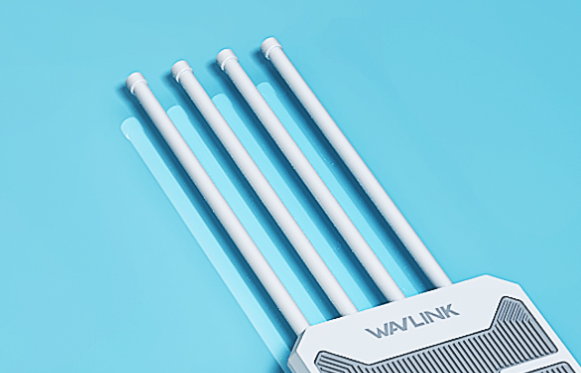A Fiberglass Antenna Is A New Type Of High-Performance Antenna Whose Main Material Is Fiberglass Reinforced Plastic (Frp), Also Known As Composite Material. Compared To Traditional Metal Materials Used In Antennas, Fiberglass Antennas Have Better Dielectric And Mechanical Properties.
Firstly, Fiberglass Antennas Have Excellent Dielectric Properties. As An Important Component Of Wireless Communication Systems, Antennas Need To Have Good Electrical Performance To Ensure Transmission Quality And Stability. Fiberglass Antennas Have Low Dielectric Constant And Low Loss, Which Can Reduce Signal Reflection And Absorption, Improve Antenna Radiation Efficiency And Frequency Bandwidth, And Achieve More Reliable And Efficient Communication.
Secondly, Fiberglass Antennas Also Have Excellent Mechanical Properties. Compared To Traditional Metal Antennas, Frp Materials Have Higher Strength, Toughness, And Corrosion Resistance. This Means That Fiberglass Antennas Can Operate For A Long Time Under Harsh Environmental Conditions Such As Strong Winds, Rain, Snow, And Acid-Base Conditions. In Addition, Due To The Lightweight Characteristics Of Frp Materials, Fiberglass Antennas Are Lighter In Weight, Making Them Easier To Install And Maintain.

Moreover, fiberglass antennas also have design flexibility. Because FRP materials have excellent molding properties, various shapes and sizes of antennas can be produced, such as flat antennas, high-gain antennas, and wideband antennas. These different types of antennas are suitable for different communication scenarios, providing users with more choices and optimization solutions.
In summary, fiberglass antennas have many advantages, including excellent dielectric and mechanical properties, and design flexibility. Compared to traditional metal materials, the use of FRP materials can greatly improve the reliability, stability, and communication quality of antennas. Therefore, fiberglass antennas have broad application prospects in wireless communication, broadcasting and television, satellite communication, etc., and will be more widely used in the future development.
Fiberglass antennas are widely used in the following fields due to their excellent physical properties and adaptability:
Antennas are an important component of wireless communication systems, used to convert electromagnetic waves into electrical signals and transmit them to the receiver. The performance of antennas directly affects the quality and reliability of wireless communication. In the selection of antenna materials, fiberglass materials have become a very popular choice due to their unique physical properties.
Fiberglass material is a composite material made of glass fiber and resin, which has the following advantages:
Firstly, the coefficient of thermal expansion of fiberglass antennas is relatively large. It may cause antenna deformation and distortion due to environmental temperature changes, which will affect its performance.
Secondly, fiberglass materials are prone to aging in high-temperature environments, resulting in a shorter lifespan of the antenna, and requiring more frequent maintenance and replacement.
In addition, in some application scenarios such as radar and satellite communication, low-conductivity materials are needed to manufacture antennas to reduce signal reflection and interference. However, the addition of carbon fibers to fiberglass materials increases their conductivity, which may affect antenna performance.
Finally, although fiberglass materials have good corrosion resistance, regular cleaning and maintenance are still required after some time of use to ensure antenna performance and lifespan.
In summary, the drawbacks of fiberglass antennas mainly include a relatively large coefficient of thermal expansion, easy aging in high-temperature environments, relatively high conductivity, the need for regular maintenance, and high production process requirements. When choosing antenna materials, it is necessary to comprehensively consider various factors based on specific application scenarios and requirements.
citation/references
https://en.wikipedia.org/wiki/Fiberglass_antenna
Here are some references related to fiberglass antennas:
Jia, X., & Guo, Y. (2017). Application of Glass Fiber Reinforced Plastics in Antenna Manufacturing. Materials Science Forum, 889, 3-8.
Zhao, Z., Wang, G., Lei, M., Zhang, X., & Chen, Y. (2019). Design and fabrication of a fiberglass-reinforced plastic parabolic antenna for satellite communication. Journal of Materials Research and Technology, 8(5), 5085-5093.
Li, S., Shi, J., & Cui, T. (2018). Research on the Performance of Fiberglass Antennas in Different Environments. Polymers, 10(3), 289.
Wu, J., Zhang, J., Jiang, Y., & Cheng, X. (2020). Study on the Mechanical Properties of Glass Fiber Reinforced Plastic Antenna Radome. Journal of Physics: Conference Series, 1567(2), 022047.
Kim, K. H., & Lee, B. C. (2016). Analysis of Electric-Field Characteristics of Fiberglass Antenna Radome. Journal of Electrical Engineering and Technology, 11(4), 1234-1242.
Get the Scoop First
Subscribe to our official website to receive exclusive first-hand news and stay up-to-date on our new product releases and promotions!